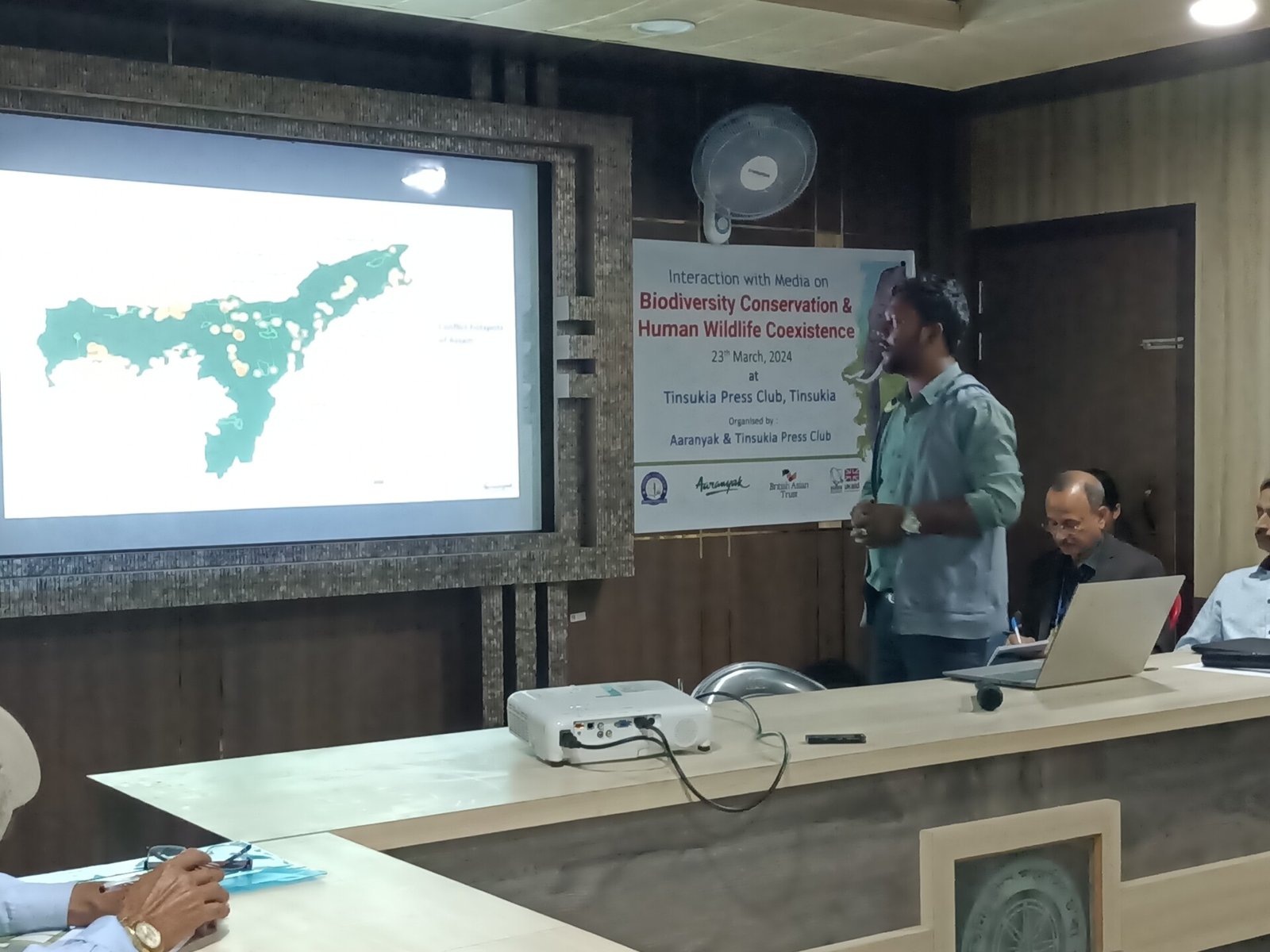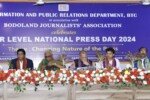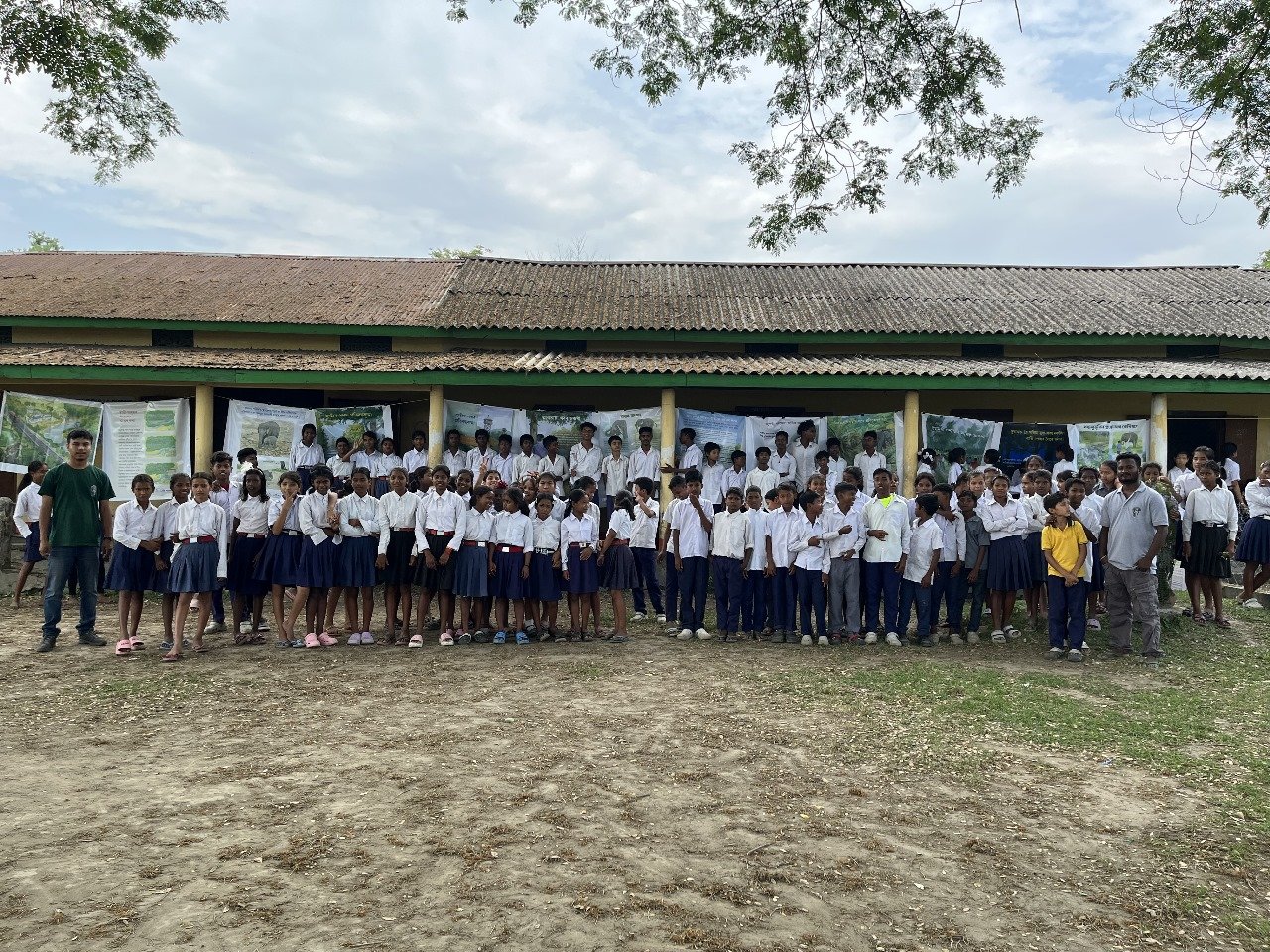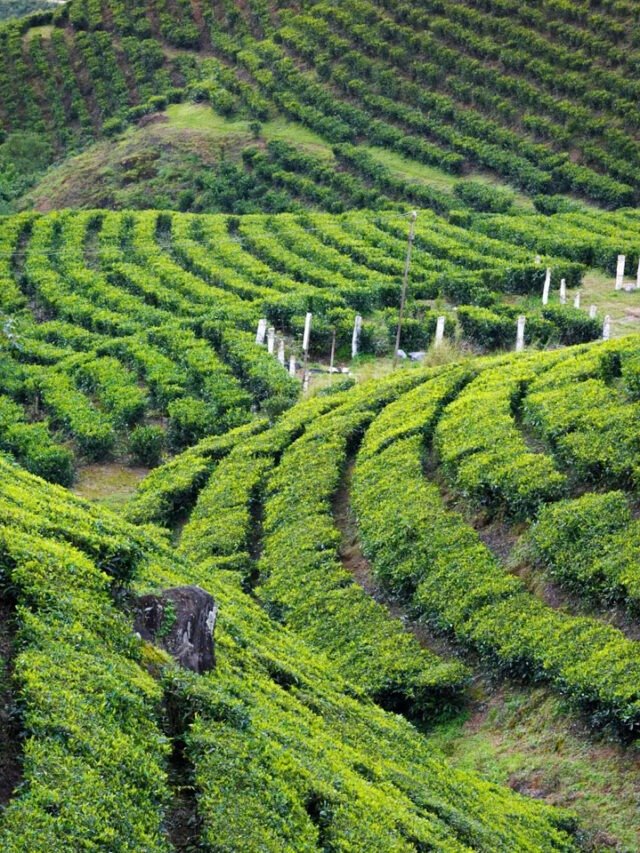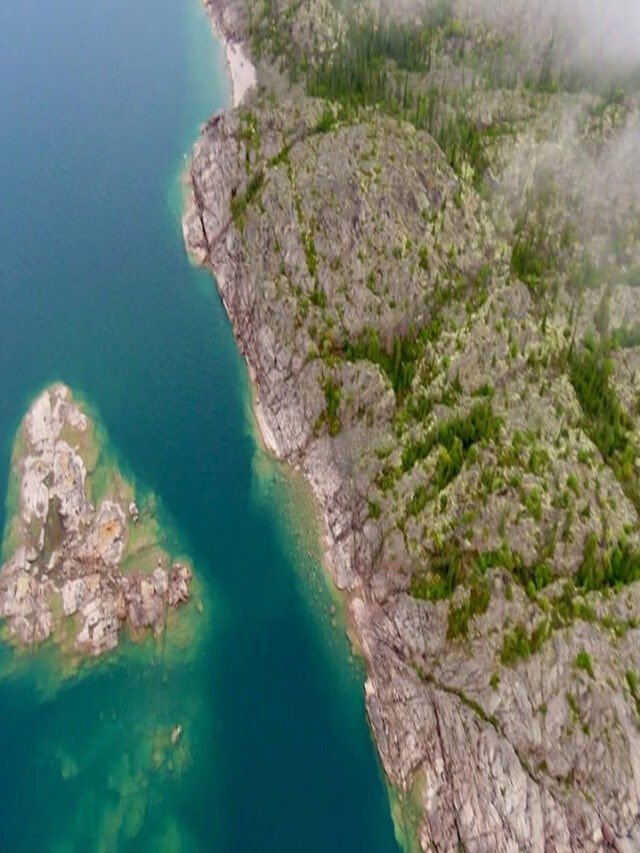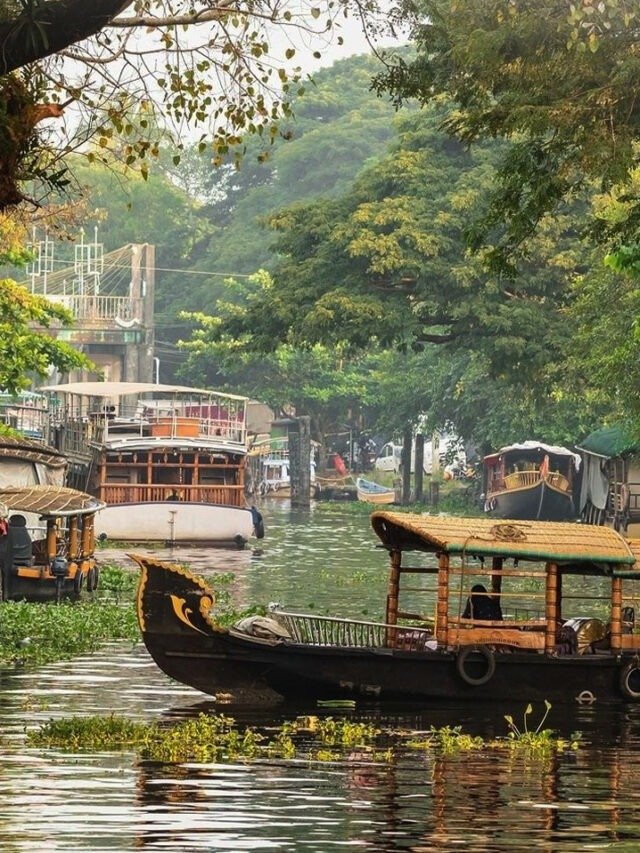HT Bureau
GUWAHATI, June 28: Aaranyak, the premier research-based biodiversity conservation organisation, recently conducted two interaction programs in Dhakuakhana and Doomdooma with influential local media personalities. The focus of these workshops was to highlight the crucial role media can play in conserving biodiversity, promoting human-wildlife coexistence, and mitigating human-elephant conflict.
Organised in partnership with the British Asian Trust and with the support of the Darwin Initiative, these workshops aimed to garner media cooperation in generating mass support for Aaranyak’s initiatives in eastern Assam. The organisation is actively working towards mitigating human-elephant conflict through the facilitation of human-wildlife coexistence.
Prominent media professionals from Majuli, Dhakuakhana, Machkhowa, Ghilamara, and Gogamukh attended the media interaction in Dhakuakhana. The discussion revolved around the pressing issue of human-elephant conflict in Assam, including the areas in and around the Majuli river island.
At the workshop held in Doomdooma College, media personnel from Doomdooma, Kakopathar, Sadiya, and Saikhowa actively participated in the deliberations. Dr Kamaleswar Kalita, principal of the college, chaired the session, while Professor Manoj Dutta anchored the workshop.
Human-elephant conflict has become a growing concern in eastern Assam, leading to crop damages and an increase in fatalities of both humans and elephants. Rapid urbanisation, encroachment on elephant habitats, and inadequate mitigation measures have exacerbated this complex issue. Aaranyak believes that sustained efforts involving multiple stakeholders are essential to foster coexistence between elephants and humans. Therefore, the organisation reached out to local mass communicators to seek their cooperation in implementing various mitigation measures for achieving harmonious coexistence.
During the media interaction in Dhakuakhana on June 21, Lakhi Konwar, Principal of Normal School, Dhakuakhana, initiated the proceedings. Niranjan Bhuyan, a senior official at Aaranyak, explained the purpose of the program, while Jayanta Kumar Pathak, an environment educator and senior manager at Aaranyak, discussed the media’s role in raising awareness about biodiversity conservation and human-elephant coexistence. Pathak emphasised that the media, as the fourth pillar of democracy, can play a crucial role in promoting mass awareness and facilitating coexistence.
Aaranyak researcher Rubul Tanti provided insights into the current human-wildlife conflict situation in Assam and the various mitigation measures undertaken by Aaranyak in coordination with the Assam Forest department and local communities in specific conflict hotspots.
The interaction at Doomdooma College auditorium on June 26 began with Dr K Kalita, the principal of the college, explaining the workshop’s objectives and commenting on the key causes of human-elephant conflict.
Rubul Tanti, a researcher at Aaranyak, delivered a detailed presentation on the human-elephant conflict scenario in Assam and the region, as well as various mitigation measures such as the installation of community-managed solar fences, growing lemon/bio fences, and promoting alternative crops.
Jayanta Kumar Pathak, senior manager at Aaranyak, presented on ‘Media on Biodiversity Conservation and Human-Elephant Coexistence’, while Bijay Sankar Bora, a life member/executive member of Aaranyak, highlighted the importance of local media in addressing biodiversity conservation issues from a global perspective using the digital ecosystem. Zakir Islam Bora, an official from Aaranyak, also provided an overview of Aaranyak’s journey since its establishment.



